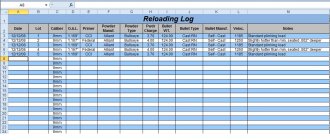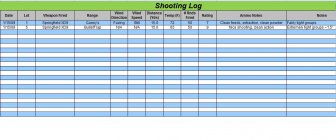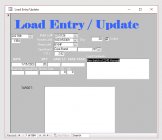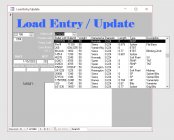New to reloading and to the forum. I see that when testing loads that it is common to test a five-shot group and measure velocity, mean velocity, standard deviation, group size, and extreme spread. Here’s the spreadsheet I have created to track load data (sample data input). Anything else that I should consider?

You are using an out of date browser. It may not display this or other websites correctly.
You should upgrade or use an alternative browser.
You should upgrade or use an alternative browser.
Tracking Load Data
- Thread starter BlackBush
- Start date
yes alot depends on what type of shooting,
i skip the spread sheet and just have a spiral note book for each gun.
first couple of pages is gun data, then shot count with what was shot and the results.
no five shots is not required, a lot can be started with just 3's
i skip the spread sheet and just have a spiral note book for each gun.
first couple of pages is gun data, then shot count with what was shot and the results.
no five shots is not required, a lot can be started with just 3's
jepp2
Gold $$ Contributor
I used a different approach than yours. You have everything grouped into one spreadsheet. I keep track of all that and more, but use different places I keep the information. Not saying yours is wrong, just saying mine works best for me.Anything else that I should consider?
I use Excel to keep track of loads and results, two different entries


I keep a master record on my brass batches, things like when acquired, lot number, firings, AMP code, weights if sorted and so on.
I keep an electronic record of my targets and chrony data and include the load label I keep the record on.
I keep a brass label with each brass batch
I keep a record of my calculations (GRT or Quickload)
I didn't record primer lots until I experienced some corner failures and had no idea which loaded ammo had the same lots.
If you don/t need it now doesn't mean you will not want it someday.
3Ackleys
Gold $$ Contributor
I use a similar spread sheet, but with less entries. Cartridge and trim length are static so can go on a header. Use a different sheet for each gun. Velo i use just the ave. and I only put ES on there.New to reloading and to the forum. I see that when testing loads that it is common to test a five-shot group and measure velocity, mean velocity, standard deviation, group size, and extreme spread. Here’s the spreadsheet I have created to track load data (sample data input). Anything else that I should consider?
View attachment 1405037
I put them in 3 ring binders with dividers, and write the info in each box. I used to transfer the info to my computer, but I have 3- 3 ring binders full, so not many make it to digital.
Attachments
Shooting for accuracy, at 100, 200, 300 yards, at least to start. Shooting from AR15 with 18" 1:8 twist barrel.yes alot depends on what type of shooting,
i skip the spread sheet and just have a spiral note book for each gun.
first couple of pages is gun data, then shot count with what was shot and the results.
no five shots is not required, a lot can be started with just 3's
It's a personal thing as to which data you keep and how you keep it.
For me, it's more meaningful to keep a loose-leaf notebook for each individual rifle with a complete shooting history which includes information like total rounds fired to date, load development results, range practice data and scores, hunting results, cleaning procedure used and / or any changes, modifications made to rifle and / or scope changes, problems / fixes, etc.
The notebook is indexed with the load development data in a separate section since this normally a one and done exercise with some verification checking time to time when needed. Complete shooting history is arranged by calendar year. So, I can go to 2022 and review the complete activity for that rifle last year, "The Good , The Bad
, The Bad  and the Ugly
and the Ugly  ."
."
The loose-leaf format provides more flexibility and allows me to add data in date order and or reorganize as needed. It also serves as a range data collection notebook.
What I like this system is that everything about that rifle is in one place.
For me, it's more meaningful to keep a loose-leaf notebook for each individual rifle with a complete shooting history which includes information like total rounds fired to date, load development results, range practice data and scores, hunting results, cleaning procedure used and / or any changes, modifications made to rifle and / or scope changes, problems / fixes, etc.
The notebook is indexed with the load development data in a separate section since this normally a one and done exercise with some verification checking time to time when needed. Complete shooting history is arranged by calendar year. So, I can go to 2022 and review the complete activity for that rifle last year, "The Good
The loose-leaf format provides more flexibility and allows me to add data in date order and or reorganize as needed. It also serves as a range data collection notebook.
What I like this system is that everything about that rifle is in one place.
TheCZKid
Silver $$ Contributor
For testing I use a spreadsheet for keeping track of how each load groups, data including powder and charge, and bullet info, which primer was tested, velocity and SD, seating depth, speed achieved, and notes.
In addition, I mark my targets with date, temp, wind, specifics which might affect results.
And when I am actively loading some tests, I keep a spiral notebook, with tabs for each rifle/load I'm working on. I write what I'm loading: like what brass and how many time shot, and which primer, seating depth, bullet used, powder and charge. And I specify what kind of a test I'm doing - like a seating depth test, or ladder test, trying different primers, or trying same load with different bullets, etc.
In addition, I mark my targets with date, temp, wind, specifics which might affect results.
And when I am actively loading some tests, I keep a spiral notebook, with tabs for each rifle/load I'm working on. I write what I'm loading: like what brass and how many time shot, and which primer, seating depth, bullet used, powder and charge. And I specify what kind of a test I'm doing - like a seating depth test, or ladder test, trying different primers, or trying same load with different bullets, etc.
Attachments
How about:New to reloading and to the forum. I see that when testing loads that it is common to test a five-shot group and measure velocity, mean velocity, standard deviation, group size, and extreme spread. Here’s the spreadsheet I have created to track load data (sample data input). Anything else that I should consider?
View attachment 1405037
CBTO
Neck Tension
Temperature
Humidity
Target Distance
17cal Fan
Silver $$ Contributor
I used a notebook for years and then entered it all into a MS Access database in the early 90's. My load entry screen allows me to choose lot numbers for everything from underlying tables. I set up reports to generate results that look like a reloading manual layout. Not perfect but it works well for me.
My C.O.L. is based on Comparator and not actual bullet tip and this makes it exactly repeatable for seating depth.
The field drop downs provide a look at source tables to choose data from.
Every load is based on brass batch number which is assigned automatically as I obtain new brass and divide it into groups of 20, 50 or 100 depending on how I box it for the field.
I can generate a report and look at a single batch of brass and see everything about it from purchase to death. I seldom use it but I can attach a picture of the target to a given load.
My C.O.L. is based on Comparator and not actual bullet tip and this makes it exactly repeatable for seating depth.
The field drop downs provide a look at source tables to choose data from.
Every load is based on brass batch number which is assigned automatically as I obtain new brass and divide it into groups of 20, 50 or 100 depending on how I box it for the field.
I can generate a report and look at a single batch of brass and see everything about it from purchase to death. I seldom use it but I can attach a picture of the target to a given load.
Attachments
AndrewB
Silver $$ Contributor
I keep 3 ring binders
powder brand and type
charge weight
bushing
ogive length
brass
primer
bullet manu, weight and type
temperture and date
Avg velo
ES
SD
notes on group and conditions
and I cut the groups out of the target and tape them into the binder
I also make my own targets I use a plus sign with a 3/4 inch circle overlaid so the center is hollow. I make sure the target is level and I use the legs of the plus sign to line up the cross hairs to help always have the same aiming point. It is better to print them on heavy stock if you can
I print on 11 x 17 (thanks work). 12 targets per page. I number the sides a,b,c and 1,2,3,4 across the top. I record in the binder which target I shot at (a1, b4, etc) so that I don't get the groups confused.
I always use wind flags
I develop loads at 300 yards for my purposes
FWIW
powder brand and type
charge weight
bushing
ogive length
brass
primer
bullet manu, weight and type
temperture and date
Avg velo
ES
SD
notes on group and conditions
and I cut the groups out of the target and tape them into the binder
I also make my own targets I use a plus sign with a 3/4 inch circle overlaid so the center is hollow. I make sure the target is level and I use the legs of the plus sign to line up the cross hairs to help always have the same aiming point. It is better to print them on heavy stock if you can
I print on 11 x 17 (thanks work). 12 targets per page. I number the sides a,b,c and 1,2,3,4 across the top. I record in the binder which target I shot at (a1, b4, etc) so that I don't get the groups confused.
I always use wind flags
I develop loads at 300 yards for my purposes
FWIW
Similar threads
- Replies
- 18
- Views
- 4,286
- Replies
- 18
- Views
- 9,631
Upgrades & Donations
This Forum's expenses are primarily paid by member contributions. You can upgrade your Forum membership in seconds. Gold and Silver members get unlimited FREE classifieds for one year. Gold members can upload custom avatars.

Click Upgrade Membership Button ABOVE to get Gold or Silver Status.
You can also donate any amount, large or small, with the button below. Include your Forum Name in the PayPal Notes field.
To DONATE by CHECK, or make a recurring donation, CLICK HERE to learn how.

Click Upgrade Membership Button ABOVE to get Gold or Silver Status.
You can also donate any amount, large or small, with the button below. Include your Forum Name in the PayPal Notes field.
To DONATE by CHECK, or make a recurring donation, CLICK HERE to learn how.











